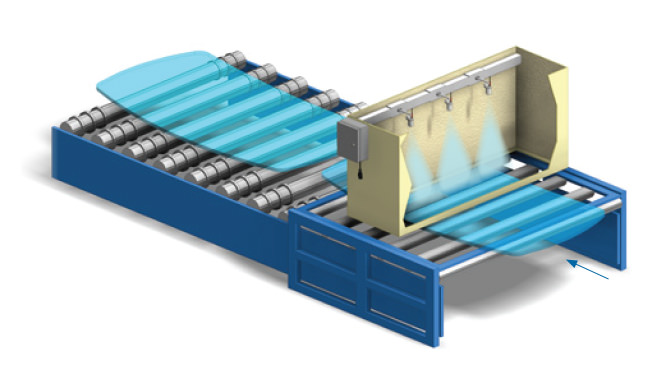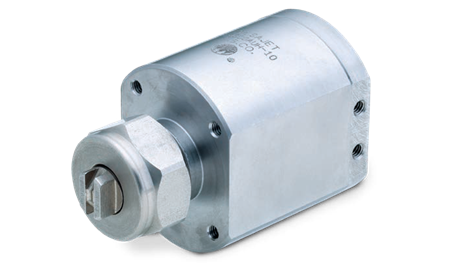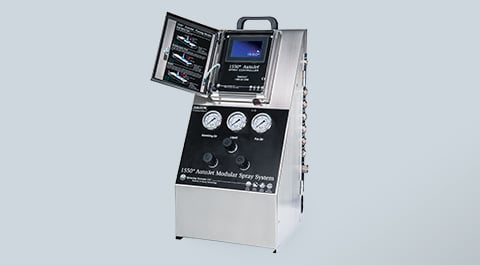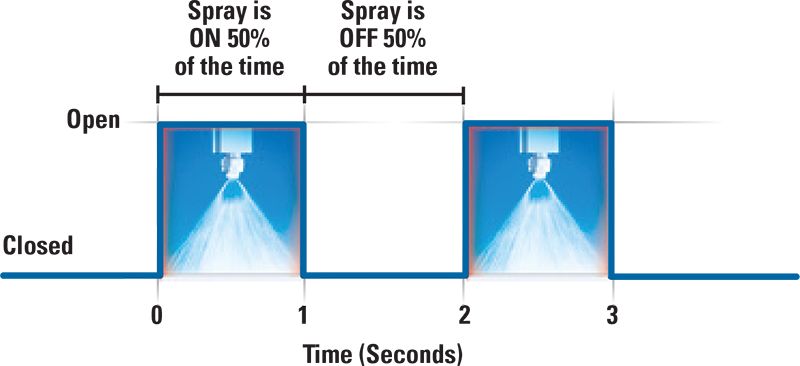Case Study
Windshield Manufacturer Saves US$75,000 with Automated Spray System
Problem:
A windshield manufacturer needed to apply a near-dry coating of celite suspension between two windshield panes prior to heating and finishing. The coating prevented scratching during handling of the glass, which had dimensions ranging from 5 to 6 feet (1.5 to 1.8 m) wide and 36 to 46 inches (914 to 1168 mm) tall. The company’s previous spray system, which consisted of pneumatically actuated, air atomizing spray nozzles, experienced frequent orifice clogging. This compromised the uniform coating required for the application and forced four production lines to shut down three to four times per week for nozzle maintenance. The nozzles were expensive and time-consuming to rebuild and often performed poorly afterward.
The company required a new solution that would reduce nozzle clogging and provide reliable, precise spraying of the fluid suspension to windshields.

Solution:
For each of the four production lines, an AutoJet® Model 1550+ Modular Spray System with PulsaJet® AA10000JJAU air atomizing, electrically actuated spray nozzles was installed. The nozzles were rod-mounted at a height of 24 inches (609 mm) and covered a total spray width of 46 inches (1168 mm). The nozzles provided the dry mist and complete coverage required with only three per line – four fewer than the previous spray system. Atomization was controlled by varying air pressure without changing liquid flow rates. Lower spray velocity resulted in improved transfer efficiency and reduced overspray compared to the previous system.
Results:
The AutoJet® spray system has proven its effectiveness, increasing production time, and greatly reducing preventive maintenance time and the large inventory of spare parts that was previously maintained. Efficient use of air also reduced air consumption costs and lowered noise levels.
The manufacturer saved a total of US$75,000 in the first year of using the system and realized a payback period of less than six months.
For complete details of this case study click here to see the PDF version.




